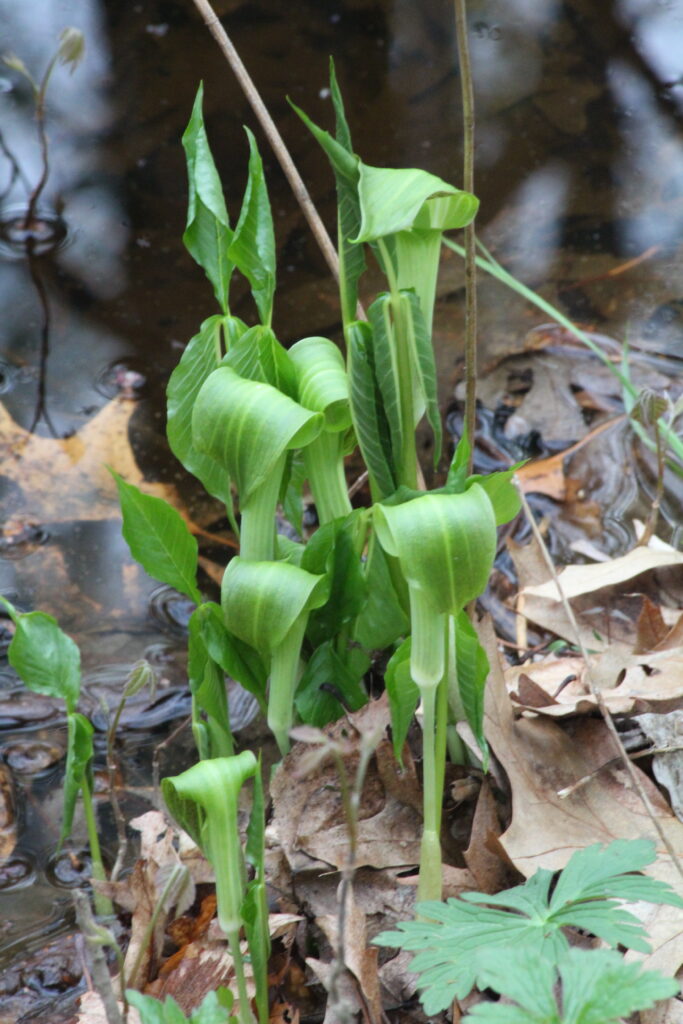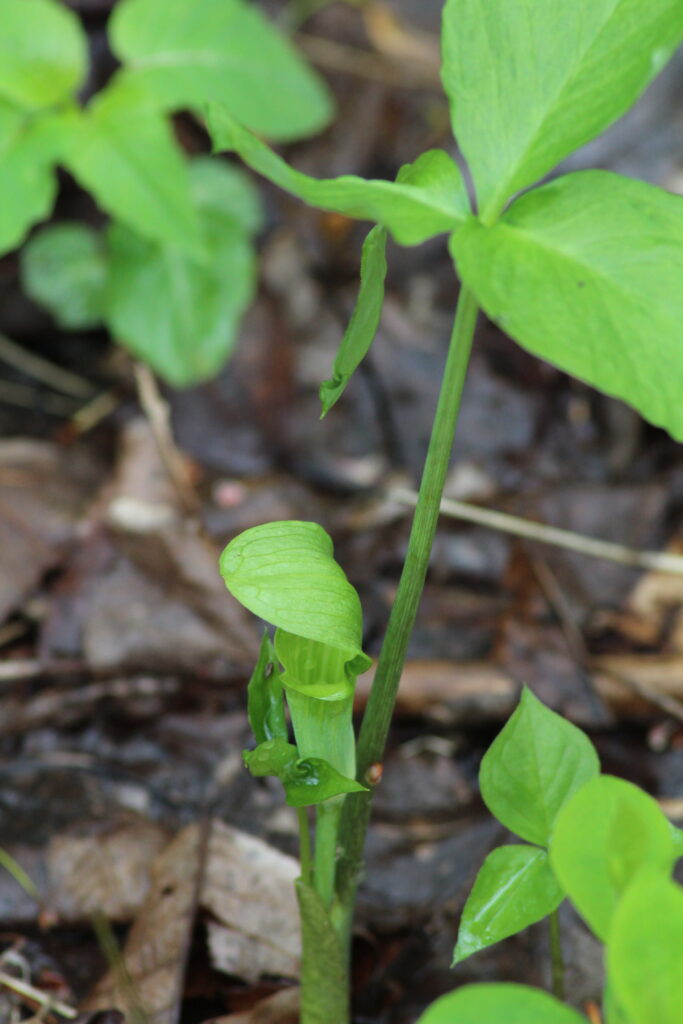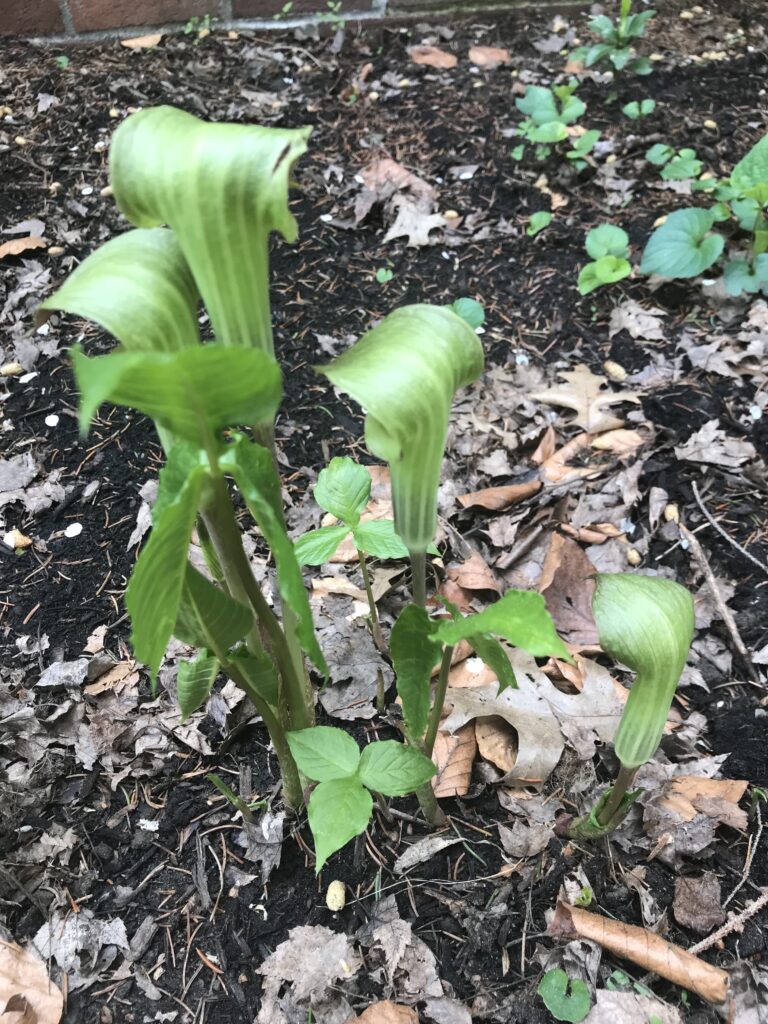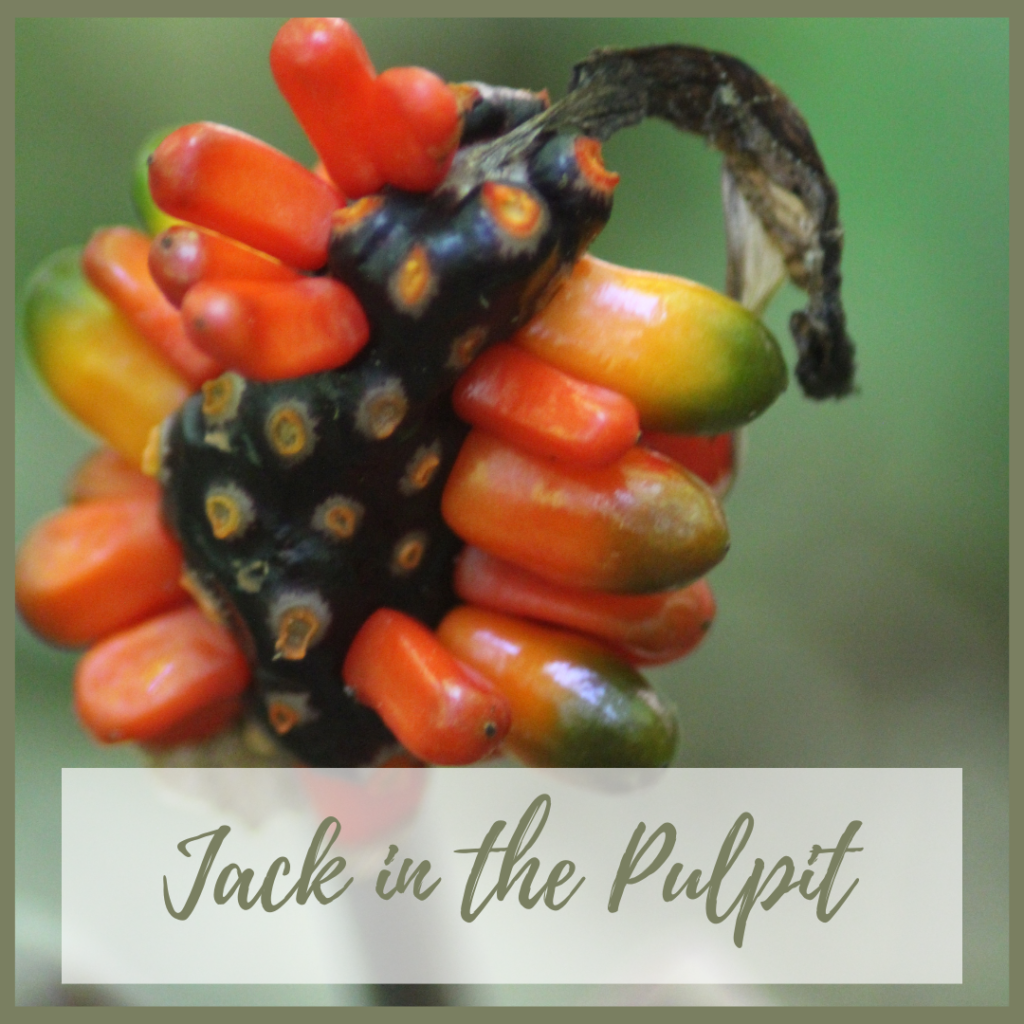Arisaema stewardsonii is typically thought of as a spring ephemeral since that is when it blooms. However, if one were to continue watching, a stunning seed head will form in the fall! While most homes are built on land that has been drained off, this swamp-loving plant will sometimes grace homeowners with more wet and shady areas. This lower-growing plant could be the perfect solution for hard-to-grow spots under a tree.

Growing Conditions
Jack in the Pulpit prefers to grow under deciduous trees, gaining full sun in the very early spring before the tree puts on leaves. Then it enjoys the shade from the trees during hot summers and the nutrients when the leaves fall to replenish the soil. It does prefer moist to wet soil that occasionally drains off for short periods of time. No maintenance is required, as it has co-evolved to survive on its own. Just needs a little help to propagate by not mowing the area so the seed heads can form.
The Plant

The plant itself is a simple set of 3 leaves which can become slightly problematic. There is a nice verse out there to protect people from poison ivy; Leaves of three leave them be. Hopefully, most people will leave them be to grow because they might be pleasantly delighted with Jack in the Pulpit! Trillium is also an early spring native plant that starts with leaves of 3. All the more reason to be delighted and leave them be.
Photo Credit: Kristi Shepler
Bloom

The blooms of Jack in the Pulpit is an elegant cup with a hood and start off bright green. As it ages and depending on the verity the green may darken. Stripes of burgundy will sometimes stripe across to add to the drama. Or maybe the stripes are white and just start to stand out more as the bloom ages.
Photo of Jack in the Pulpit growing around the foundation of a brick house.
Seed Pods
This is just one of those plants that keeps giving! In early fall keep an eye for a funky seed head to burst forth in blazing color. These berries will attract wildlife that loves to taste them and help sustain them over the fast approaching harsh winters.
Please note that many parts of the plant can cause irritation if eaten by humans. This may be better suited in an area where a wandering child won’t be tempted to eat these enticing “berries”. While many native plants are edible this one is best left for the birds.

Propagation
In the wild birds and even box turtles enjoy the berries encasing the seed. Often these berries need to be separated from the seed before they can germinate. This is often how Jack in the Pulpit plants pop up in new areas as the wildlife carry the seeds along.
If you are lucky enough to have these plants pop up in your yard and you want to help nature along, here are some helpful tips. Some people have had success with root division. Just make sure the plant is dormant and can reestablish during periods of high moisture. If not, wait until August or September to remove the small brown seeds from the pulp. Leaving the pulp outside for wildlife to enjoy. The seeds will need to go through at least 60 days of cold moist stratification, which you can try to replicate indoors or just plant the seeds right before winter sets in.
Wild Ones
Wild Ones Capital Region New York is a chapter of Wild Ones a national organization promoting the use of native plants in the garden. Membership is a great way to support this mission on both a local and national level. Check out membership.wildones.org for more details including all the great benefits you will receive as a member. Our local chapter works diligently to provide specific information about our local native plants. This includes not only this blog but also handing out materials when we are out in the community. Even if you are a Wild One’s member, please consider donating directly to our chapter.
